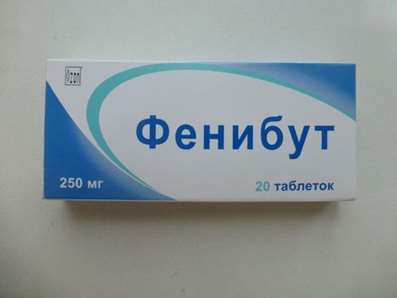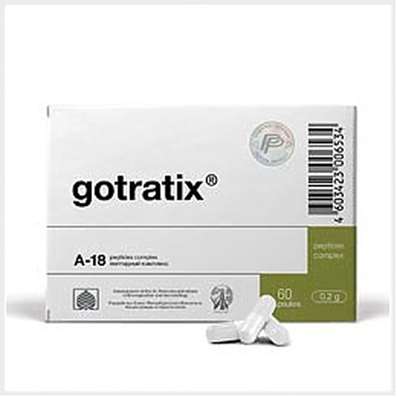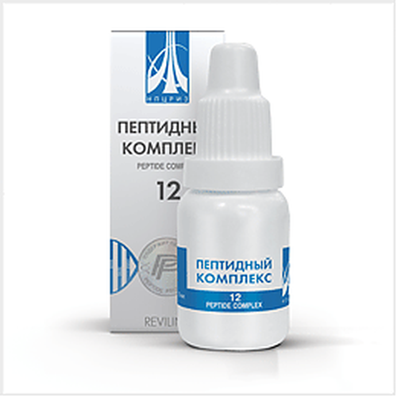Instruction for use: Movasin
I want this, give me price
Active substance Meloxicam
ņ“’ M01AC06 Meloxicam
Pharmacological group
NSAIDs - Oxicams
Nosological classification (ICD-10)
M06.9 Other specified rheumatoid arthritis
Rheumatoid arthritis,Pain syndrome in rheumatic diseases, Pain in rheumatoid arthritis, Inflammation in rheumatoid arthritis, Degenerative forms of rheumatoid arthritis, Children's rheumatoid arthritis, Exacerbation of rheumatoid arthritis, Acute articular rheumatism, Rheumatic arthritis, Rheumatic polyarthritis, Rheumatoid arthritis, Rheumatic polyarthritis, Rheumatoid arthritis, Rheumatoid arthritis of active course, Rheumatoid arthritis, Rheumatoid polyarthritis, Acute rheumatoid arthritis, Acute rheumatism
M15-M19 Osteoarthritis
M45 Ankylosing spondylitis
Ankylosing spondylarthrosis, Marie-Strumpel disease, Ankylosing spondylitis, Pain syndrome in acute inflammatory diseases of the musculoskeletal system, Pain syndrome in chronic inflammatory diseases of the musculoskeletal system, Bechterew's disease, Ankylosing spondylitis, Diseases of the spinal column, Rheumatic spondylitis, Bechterew-Marie-Strumpel disease
Composition and form of release
Tablets 1 table.
meloxicam 7.5 mg/15 mg
auxiliary substances: MCC; polyvinylpyrrolidone (povidone); milk sugar (lactose); potato starch; clolidone CL-V (crospovidone); talc; magnesium stearate
in packs of contiguous cells for 10 units; in a pack of cardboard 1 or 2 packages or in plastic cans of 20 pcs .; in a pack of cardboard 1 can.
Description of dosage form
Round, flat cylindrical tablets without risks (for a dosage of 7.5 mg), with a risk (for a dosage of 15 mg), light yellow color. On the surface of the tablets, slight marbling is allowed.
pharmachologic effect
Pharmacological action - anti-inflammatory, antipyretic, analgesic, analgesic.
Pharmacodynamics
NSAIDs. Has anti-inflammatory, antipyretic and analgesic effect. The mechanism of anti-inflammatory action is associated with inhibition of the enzymatic activity of COX-2, which participates in the biosynthesis of PG in the inflammatory region. To a lesser extent, meloxicam acts on COX-1, involved in the synthesis of PG, protecting the mucosa of the gastrointestinal tract and taking part in the regulation of blood flow in the kidneys.
Pharmacokinetics
Suction. After taking the drug inside meloxicam is well absorbed from the digestive tract, while its absolute bioavailability is 80%. Reception at the same time as food intake does not affect suction. The concentration of meloxicam when taking the drug inside at doses of 7.5 and 15 mg is proportional to the dose.
Distribution. The equilibrium state is achieved within 3-5 days of regular admission. With long-term (more than 1 year) application of the drug, the concentration of meloxicam is similar to CSS, which was established after the first achievement of a steady state of pharmacokinetics. Binding to plasma proteins is more than 99%. When taking the drug 1 time, CSSmin and CSSmax differ to a small extent and make up 7.5 mg - 0.4-1.0 μg / ml, and when taking a dose of 15 mg - 0.8-2.0 μg / ml, respectively. Meloxicam penetrates through the histogematic barriers, the concentration in the synovial fluid reaches 50% Cmax in the plasma. The volume of distribution (Vd) is, on average, 11 liters.
Metabolism. Meloxicam is almost completely metabolized in the liver with the formation of four pharmacologically inactive metabolites. The main metabolite is 5'-carboxymelloxicam, which is formed by oxidation of the intermediate metabolite (5'-hydroxymethylmeloxicam). In vitro studies have shown that biotransformation takes place with the participation of CYP2C9, the CYP3A4 isoenzyme is of additional importance. In the formation of the other two metabolites involved peroxidase, the activity of which, probably, individually varies.
Excretion. It is excreted equally with feces and urine, mainly in the form of metabolites (5'-carboxymelloxicam - up to 60%, 5'-hydroxymethylmeloxicam - 9%, and 2 others - 16 and 4% respectively). With feces, less than 5% of the daily dose is excreted unchanged, in urine, in unchanged form, the drug is found only in trace amounts. T1 / 2 - 15-20 hours. The plasma clearance is an average of 8 ml / min.
Pharmacokinetics in special clinical cases. In elderly people, the clearance of the drug is reduced.
In patients with hepatic or renal insufficiency of moderate severity, the pharmacokinetics of meloxicam does not change significantly.
Indication
Symptomatic therapy of the following rheumatic diseases accompanied by pain syndrome, including:
osteoarthritis;
rheumatoid arthritis;
ankylosing spondylitis (Bechterew's disease).
Contraindications
hypersensitivity to the components of the drug;
aspirin bronchial asthma;
peptic ulcer of the stomach and duodenum in the phase of exacerbation;
bleeding of various genesis (including from the gastrointestinal tract, cerebrovascular);
severe renal failure (if hemodialysis is not performed);
severe hepatic impairment;
severe heart failure;
children's age till 15 years;
pregnancy;
lactation (breastfeeding).
With caution: in elderly patients, with an erosive-ulcerative gastrointestinal lesion in the anamnesis.
pregnancy and lactation
The drug is not recommended for use during pregnancy and lactation.
Side effects
On the part of the digestive system: nausea, vomiting, abdominal pain, diarrhea, constipation, flatulence, erosive and ulcerative lesions of the digestive tract, perforation of the stomach or intestines, gastrointestinal bleeding (latent or apparent), increased activity of hepatic enzymes, hepatitis, colitis, stomatitis, dryness in the oral cavity, esophagitis.
From the cardiovascular system: tachycardia, increased blood pressure, a sensation of tides of blood to the face.
From the respiratory system: exacerbation of the course of asthma, cough.
From the side of the central nervous system: headache, dizziness, noise in the ears, disorientation, confusion of thoughts, sleep disturbance.
On the part of the genitourinary system: edema, interstitial nephritis, renal medullary necrosis, urinary infection, proteinuria, hematuria, renal insufficiency.
On the part of the organs of vision: conjunctivitis, blurred vision.
From the skin: itching, skin rash, urticaria, multi-form exudative erythema (including Stevens-Johnson syndrome), toxic epidermal necrolysis (Lyell's syndrome), increased photosensitivity.
On the part of the hematopoiesis system: anemia, leukopenia, thrombocytopenia.
Allergic reactions: anaphylactoid reactions (including anaphylactic shock), swelling of the lips and tongue, allergic vasculitis.
Other: fever.
Interaction
With simultaneous application with other NSAIDs, incl. with acetylsalicylic acid increases the risk of erosive and ulcerative lesions and bleeding in the gastrointestinal tract.
With simultaneous use with antihypertensive drugs, it is possible to reduce the effectiveness of the latter.
With simultaneous use with lithium preparations, lithium cumulation and its toxic effect can be developed (control of lithium concentration in the blood is recommended).
With simultaneous use with methotrexate, the side effect of the latter on the hematopoietic system is increased (the risk of anemia and leukopenia, periodic monitoring of the general blood test is shown).
With simultaneous use with diuretics and cyclosporine, the risk of developing kidney failure increases.
With simultaneous use with intrauterine contraceptives, the effectiveness of the latter may be reduced.
With simultaneous use with anticoagulants and antiplatelet agents (heparin, ticlopidine, warfarin), as well as with thrombolytic drugs (streptokinase, fibrinolysin), the risk of bleeding increases (periodic monitoring of blood clotting indices is necessary).
With simultaneous application with colestyramine, as a result of binding meloxicam, its excretion through the digestive tract increases.
Dosing and Administration
Inside, with food, once a day.
Rheumatoid arthritis: 15 mg / day. Depending on the therapeutic effect, the dose can be reduced to 7.5 mg / day.
Osteoarthritis: 7.5 mg / day. If the dose is ineffective, it can be increased to 15 mg / day.
Ankylosing spondylitis: 15 mg / day. The maximum daily dose should not exceed 15 mg.
In patients with an increased risk of side effects, as well as in patients with severe renal failure who are on hemodialysis, the dose should not exceed 7.5 mg / day.
Overdose
Symptoms: impaired consciousness, nausea, vomiting, epigastric pain, gastrointestinal bleeding, acute renal failure, hepatic insufficiency, respiratory arrest, asystole.
Treatment: there is no specific antidote; with an overdose of the drug should be washed stomach, prescribe activated charcoal (within the next hour) and symptomatic therapy. Cholestyramine accelerates the excretion of the drug from the body. Forced diuresis, alkalization of urine, hemodialysis are ineffective because of the high degree of binding of the drug to blood proteins.
special instructions
Care should be taken when using the drug in patients who have a history of peptic ulcer or duodenal ulcer, as well as in patients who are on anticoagulant therapy. In such patients, the risk of ulcerative-erosive gastrointestinal diseases is increased.
Caution should be exercised and the kidney function should be monitored when the drug is used in elderly patients, with chronic heart failure, with circulatory failure, with cirrhosis of the liver, and with hypovolemia as a result of surgical interventions.
In patients with renal insufficiency, if Cl creatinine is more than 25 ml / min, dosage adjustment is not required.
In patients on dialysis, the dosage of the drug should not exceed 7.5 mg / day.
Patients taking both diuretics and meloxicam should take a sufficient amount of fluid.
If allergic reactions (itching, skin rash, urticaria, photosensitization) occur during treatment, you need to see a doctor to resolve the issue of stopping the drug.
Meloxicam , as well as other NSAIDs, can mask the symptoms of infectious diseases.
The use of meloxicam, as well as other drugs that block the synthesis of PG, can affect fertility, so the drug is not recommended for women who want to become pregnant.
Management of vehicles, maintenance of machines and mechanisms. The use of the drug can cause unwanted effects in the form of headaches and dizziness, drowsiness. It should abandon the management of vehicles, maintenance of machinery and mechanisms and other activities that require concentration.
storage Conditions
In a dry, the dark place at a temperature of no higher than 25 į C.
Keep out of the reach of children.
Shelf life
5 years.
Do not use after the expiry date printed on the package.

 Cart
Cart





